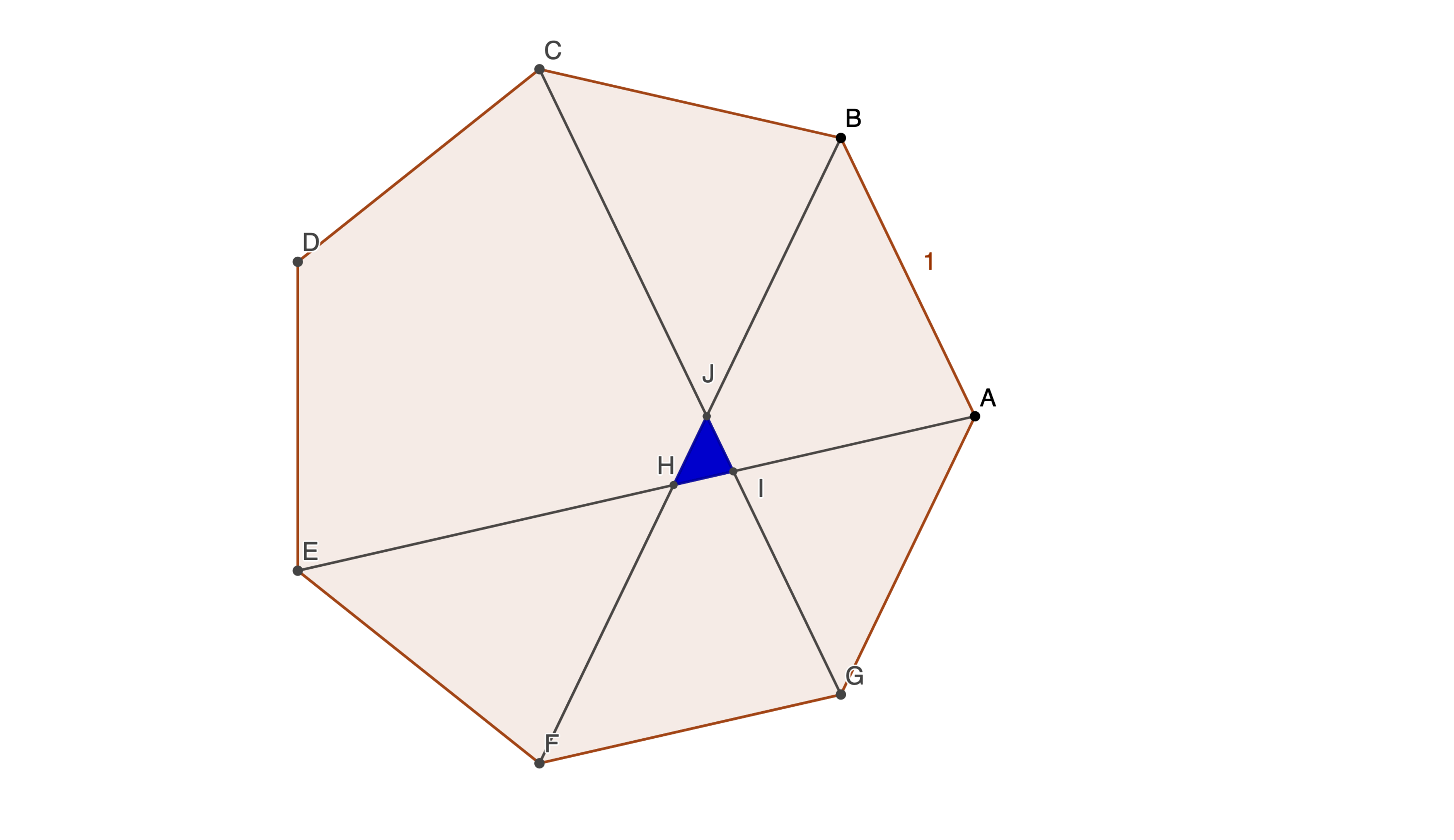Septic Triangle

The figure shows a regular septagon with side length 1. △ H I J is formed by diagonals A E , B F , and C G . What is the area of △ H I J ? Find a closed-form solution, convert it to a decimal number, and submit the sum of the first 50 digits to the right of the decimal point.
The answer is 239.
This section requires Javascript.
You are seeing this because something didn't load right. We suggest you, (a) try
refreshing the page, (b) enabling javascript if it is disabled on your browser and,
finally, (c)
loading the
non-javascript version of this page
. We're sorry about the hassle.
2 solutions
How did you get x + y = 1 ?
JI=y, IG=x, BJGA - rhombus. BJ=x+y=GA=1
Aha! Nice observation. Thank you.
1 2 3 4 5 6 7 8 9 10 11 12 13 14 15 16 17 18 19 20 21 22 23 24 25 26 27 28 |
|
1 2 3 |
|
The area is 4 sin 3 ( 1 4 π ) sin ( 7 π ) and this is 0.0191225580385579541933490594070239691892793864506960823994007897861099600100983419092024586714785028599944956629719990953621880...
Don´t you think that 50 digits is a bit too much when this is a geometry question. Because I got the correct answer, but my calculator could not give me 50 digits after decimal point.
Yes, it was a bit immature of me. On the other hand, there is no excuse for letting precision stop you from answering the question assuming you have a closed-form expression. Just use Wolfram Alpha or any other online calculator.
What do think about this - link text
Well, I did not think of using Wolfram Alpha. At least I learned I can use it to calculate my answers with higher precision than calculator on my computer. :)
Find Area - use WolframAlpha
Find sum digits
Answer - 239.